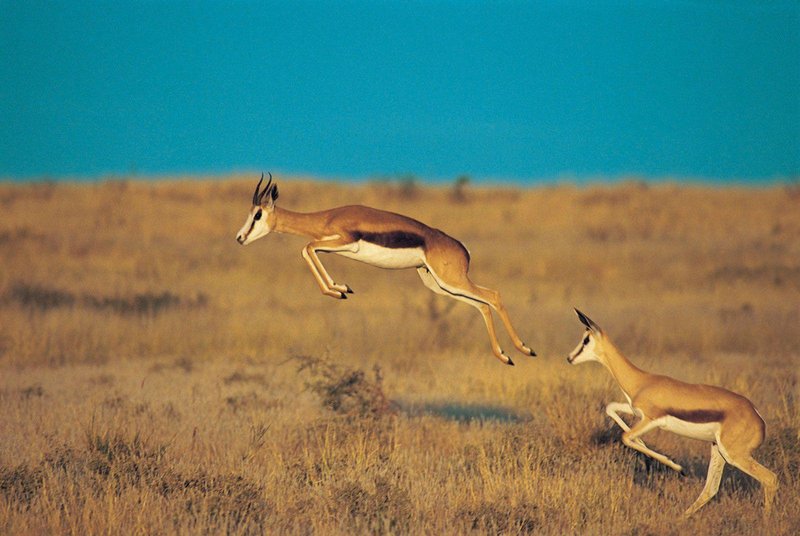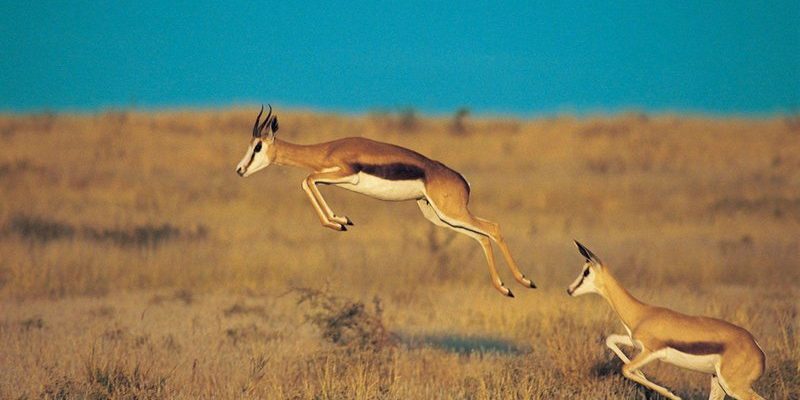
Imagine a bustling marketplace where everyone relies on one another to keep things running smoothly. The gazelle is like the vendor who not only sells goods but also influences the entire economy by providing essentials. They contribute to their environment in multiple ways, from grazing on grasses to becoming prey for larger animals. Let’s dive deeper into how gazelles fit into their ecosystems and what makes them so important.
Feeding Habits and Plant Life
Gazelles primarily feed on grasses, leaves, and shoots. By grazing, they play a significant role in plant life. You might be wondering, “How does munching on grass matter?” Well, when gazelles eat, they help control grass growth. This is vital because it prevents any single type of grass from dominating the ecosystem.
Healthy grazing practices ensure that nutrients circulate in the soil, which allows various plant species to thrive. When gazelles selectively graze, they often choose the younger, more tender shoots, allowing older plants to grow and spread. This promotes biodiversity, which is the backbone of a healthy ecosystem. Essentially, these graceful creatures act like nature’s lawnmowers, keeping the grass in check and encouraging a variety of plants to flourish.
Additionally, through their grazing behavior, gazelles indirectly influence the populations of other herbivores. If gazelles keep the grass short, they create an environment favorable for smaller species like rodents or various insects that benefit from shorter grasses. So, the next time you see a gazelle, remember that it’s not just eating; it’s actively shaping the landscape.
Prey for Predators
Gazelles are an essential food source for many predators, including lions, leopards, and hyenas. Their presence in the ecosystem fuels the predator-prey dynamic, which is crucial for maintaining the balance of wildlife populations. You could think of gazelles as the cornerstone in a highly complex food web, providing sustenance for larger animals.
Strong and agile, gazelles have developed impressive speed and maneuverability to evade their predators. This ability not only benefits their survival but also challenges their predators. It encourages them to become more efficient hunters, which plays a part in the natural selection process. In the grand scheme of things, if gazelles were to disappear, the predators that rely on them would find themselves in serious trouble, which could disrupt the entire ecosystem.
The dance between gazelles and their predators is a classic example of nature’s balance. When gazelles thrive, it allows predators to flourish as well, and when their populations fluctuate, it impacts many other species in the food web.
Seed Dispersal
Another fascinating role that gazelles play is in seed dispersal. As these animals graze, they inevitably consume seeds along with their food. When gazelles move around their habitat, they also move these seeds. Some seeds pass through their digestive system unharmed and are deposited in different areas through their droppings.
This act of moving seeds around is vital for plant reproduction and contributes to the distribution of various plant species across the landscape. It’s like a natural delivery service for vegetation! This spreading of seeds allows for greater genetic diversity and helps establish new plants in different regions, promoting overall ecosystem health.
Plus, when new plants grow in different places, they create habitats for other creatures and offer food sources as well. Gazelles, without even realizing it, are contributing to the lushness and diversity of their environment, making it a better home for many species.
Influence on Habitat Structure
The activities of gazelles can influence the structure of their habitats in significant ways. For example, their grazing behavior creates open areas in the grasslands, which can benefit other species. These open patches allow sunlight to reach the ground, promoting a diverse array of plants that might not thrive in dense grass.
These habitat changes can create opportunities for other animals to thrive. Birds, for instance, might find it easier to nest in open areas, while smaller mammals can navigate the landscape without the risk of being hidden in thick grass. Likewise, a wider variety of plant life can support different insects and pollinators, making the entire environment more vibrant.
Essentially, gazelles contribute to the dynamic balance of their habitats. They create a more diverse landscape, which is fundamental for the well-being of countless species.
The Economic and Cultural Importance of Gazelles
Beyond their ecological roles, gazelles hold significant economic and cultural importance. In many African cultures, they are seen as symbols of grace and beauty. Their presence in art, folklore, and traditional stories highlights their importance to human society.
From a tourism perspective, gazelles are a big draw for wildlife enthusiasts and photographers. People flock to national parks to catch a glimpse of these elegant creatures in their natural habitats. This tourism can provide vital funding for conservation efforts, helping to protect not only the gazelles but the ecosystems they inhabit.
Moreover, beyond their beauty, gazelles play a role in the local economy through ecotourism. Communities near gazelle habitats often benefit from the income generated by visitors, which can lead to increased awareness and efforts to preserve these environments.
Challenges Gazelles Face
Despite their crucial roles in ecosystems, gazelles face numerous challenges. Habitat loss due to human development, climate change, and poaching are significant threats. As agriculture expands and urban areas grow, gazelles lose their natural homes, putting pressure on their populations.
You might be thinking, “What can be done?” Conservation efforts are vital to protecting these animals. Creating wildlife corridors can help gazelles safely navigate between habitats. Supporting local communities and sustainable tourism initiatives also boosts awareness about the importance of preserving gazelle populations.
Furthermore, international efforts to combat poaching and illegal trade are essential. The more awareness we raise about the gazelle’s role in its ecosystem, the better we can protect these stunning creatures for future generations.
In conclusion, gazelles play multiple vital roles in their ecosystems, from controlling plant life and serving as prey to dispersing seeds and influencing habitat structure. Their beauty captures our hearts, but it’s essential to remember how interconnected their lives are with the health of their environment. Protecting gazelles is not just about protecting a single species; it’s about preserving the delicate balance of life that also supports countless other organisms. So, next time you see a gazelle, think about the big impact such a graceful creature has on its ecosystem!

